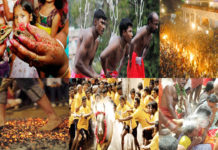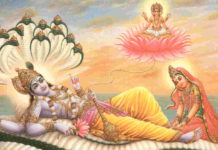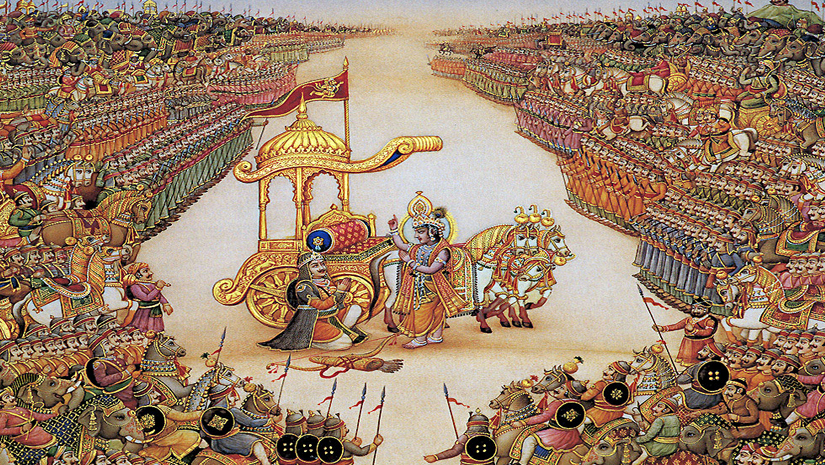For a hugely Diversified nation like that of India- having innumerable tribes is to experience the vibrancy and the unity in diversity that India is known for. Living a life among these numerous tribes, religions and castes is an exhilarating experience- let’s see, 10 such lesser known tribes in India.
1. Bnei Menashe
 The tribe of Manipur are the descendants of the Lost Tribes of Israel. Apparently, they were one of the ancient tribes of 722 BC who were exiled from Israel when the country was conquered by the Neo-Assyrian Empire.But during the late 20th century, their claims were finally confirmed by a rabbi from Israel.
The tribe of Manipur are the descendants of the Lost Tribes of Israel. Apparently, they were one of the ancient tribes of 722 BC who were exiled from Israel when the country was conquered by the Neo-Assyrian Empire.But during the late 20th century, their claims were finally confirmed by a rabbi from Israel.
2. Sentinelese
 They are very particular about their privacy and have no desire of mixing with the rest of the world and get extremely hostile to anyone who tries to break into their isolation. After several attempts to establish contacts with them and only been greeted with showers of arrows and javelins that has caused several injuries and deaths, hence the Indian government stopped attempts of meeting.
They are very particular about their privacy and have no desire of mixing with the rest of the world and get extremely hostile to anyone who tries to break into their isolation. After several attempts to establish contacts with them and only been greeted with showers of arrows and javelins that has caused several injuries and deaths, hence the Indian government stopped attempts of meeting.
3. Chenchus
 This South Indian tribe is one of the most progressive people in the country. Unlike several so called modern societies of India, Chenchus have the right to choose the man or woman to marry , tribe allows divorce between partners on the grounds of incompatibility and widow remarriage not a very big deal for them
This South Indian tribe is one of the most progressive people in the country. Unlike several so called modern societies of India, Chenchus have the right to choose the man or woman to marry , tribe allows divorce between partners on the grounds of incompatibility and widow remarriage not a very big deal for them
4. Bishnoi
 The original environmental conversationalists of India. Bishnoi, prohibits the followers to harm any living being or cut down trees. 363 Bishnoi men and women sacrificed their lives in 1730 to save trees from being cut down the king of Jodhpur. Men wear simple white clothes and women are clad in red. They maintain the uniformity in, clothes out of the belief that it keeps humans from jealousy.
The original environmental conversationalists of India. Bishnoi, prohibits the followers to harm any living being or cut down trees. 363 Bishnoi men and women sacrificed their lives in 1730 to save trees from being cut down the king of Jodhpur. Men wear simple white clothes and women are clad in red. They maintain the uniformity in, clothes out of the belief that it keeps humans from jealousy.
5. Siddi
 These tribes owe their origin to Southeast Africa from where they were brought to India as slaves as early as 700 A.D by the Portuguese and Arab merchants. Thousands of years in India have almost modified their characteristics as the Bantu tribe of Africa but there’s something that they had managed to retain from their ancient ancestry – their music and dance- Dhamaal which is practiced in Gujarat by the Siddi tribes in the region.
These tribes owe their origin to Southeast Africa from where they were brought to India as slaves as early as 700 A.D by the Portuguese and Arab merchants. Thousands of years in India have almost modified their characteristics as the Bantu tribe of Africa but there’s something that they had managed to retain from their ancient ancestry – their music and dance- Dhamaal which is practiced in Gujarat by the Siddi tribes in the region.
6. Murias
 The Murias may be considered as sexually liberated. Muria youths are sent to ghotuls designed as mixed-sex dormitories where they’re encouraged to engage in sexual activities.Although they refrain from forming an emotional bond with them.
The Murias may be considered as sexually liberated. Muria youths are sent to ghotuls designed as mixed-sex dormitories where they’re encouraged to engage in sexual activities.Although they refrain from forming an emotional bond with them.
7. Bhotiya
 The tribe of Uttarakhand, religion has a very interesting harmony of Buddhist and Hindu beliefs. Although, originally Buddhist, their Hindu beliefs allow and also encourages them to incorporate marijuana and bhang into their rituals, which is associated to Lord Shiva in Hinduism.
The tribe of Uttarakhand, religion has a very interesting harmony of Buddhist and Hindu beliefs. Although, originally Buddhist, their Hindu beliefs allow and also encourages them to incorporate marijuana and bhang into their rituals, which is associated to Lord Shiva in Hinduism.
8. Drokpa
 In the highlands of Ladakh, India, lives the tribe who are the descendants of the soldiers of Alexander from 327 BC. Drokpas do not marry out of their community to preserve their ethnicity. They’re magnificently dressed in luscious fur coats and flower pots and are open about pre-marital sex, polygamy, polyandry and public display of affection are also known to consider wife swapping as a part of their culture and tradition.
In the highlands of Ladakh, India, lives the tribe who are the descendants of the soldiers of Alexander from 327 BC. Drokpas do not marry out of their community to preserve their ethnicity. They’re magnificently dressed in luscious fur coats and flower pots and are open about pre-marital sex, polygamy, polyandry and public display of affection are also known to consider wife swapping as a part of their culture and tradition.
9. Jarawas
 Although extremely protective of their culture and ethnicity, these tribes have interesting tradition, including the changing of the name of children as they hit puberty which takes place with an elaborate ceremony.While adolescent boys have to kill a pig, girls are smeared with pig oil as a part of the tradition. The Jarawas are essentially hunters, but they never kill or eat deer meat although there is an abundance of the animal where they live.
Although extremely protective of their culture and ethnicity, these tribes have interesting tradition, including the changing of the name of children as they hit puberty which takes place with an elaborate ceremony.While adolescent boys have to kill a pig, girls are smeared with pig oil as a part of the tradition. The Jarawas are essentially hunters, but they never kill or eat deer meat although there is an abundance of the animal where they live.
10. Patua
 Thetribe from Bengal skilled in painting and singing. Patachitra is the name of their art which are basically scroll paintings that are unfurled in front of the onlooker with songs sung by the artists themselves. The art and the songs of the Patuas are based on the mythological and traditional tales of the Patua culture as well as modern contexts.The materials for painting are procured from natural sources such as clay, leaves, flowers and trees.
Thetribe from Bengal skilled in painting and singing. Patachitra is the name of their art which are basically scroll paintings that are unfurled in front of the onlooker with songs sung by the artists themselves. The art and the songs of the Patuas are based on the mythological and traditional tales of the Patua culture as well as modern contexts.The materials for painting are procured from natural sources such as clay, leaves, flowers and trees.
Source: Storypick
By: Archa Dave




























